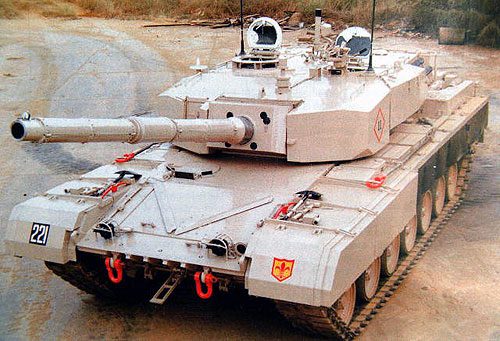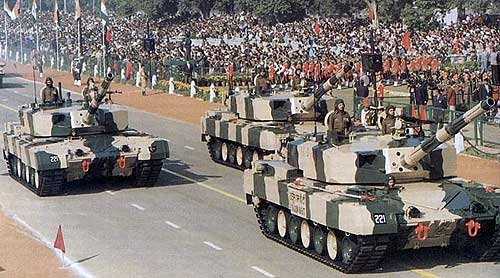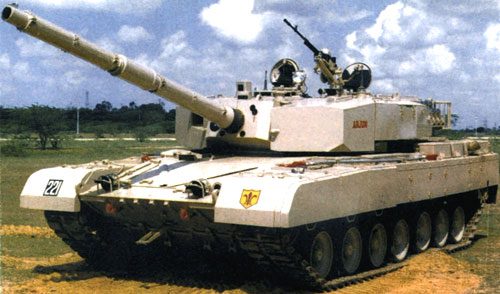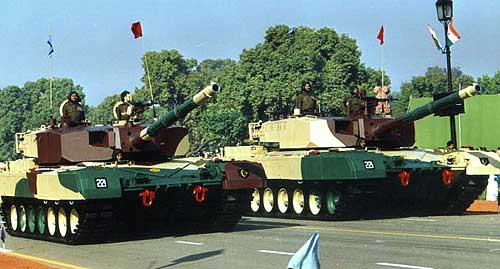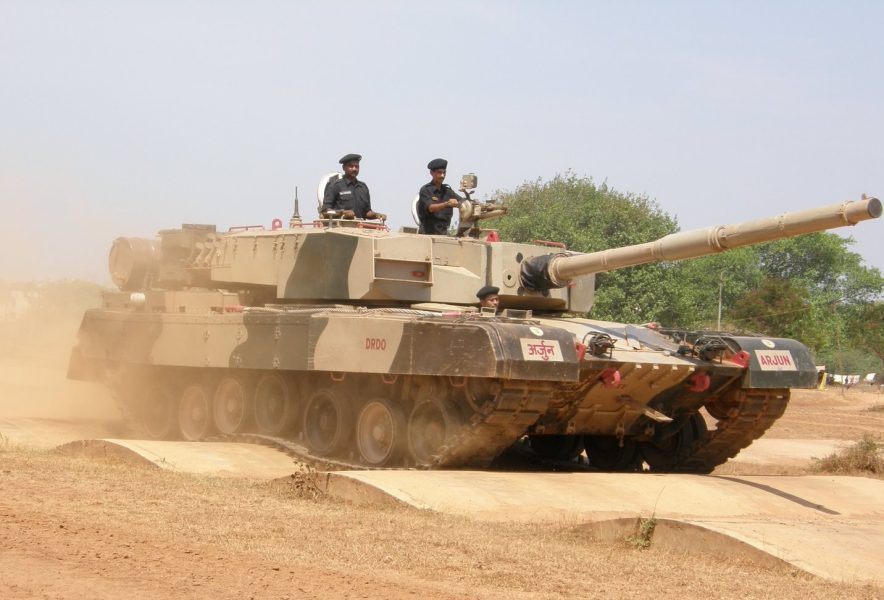
Arjun main battle tank
Arjun main battle tankArjuna (Skt. arjuna “white, light”) is the hero of the Mahabharata, one of the key figures of Hindu mythology.
There were reports that by 2000 it was planned to supply 1500 Arjun tanks to the troops to replace the obsolete Vijayanta tank, but this did not happen. Judging by the increase in imported components, technical problems were the culprit. However, it is a matter of honor for India to have a nationally developed tank in service, especially against the backdrop of Pakistan's attempts to create its own Al Khalid tank.
The Indian tank Arjun has a classic layout. The driver is located in front and to the right, the tank turret is located in the central part of the hull. The tank commander and gunner are in the turret on the right, the loader is on the left. Behind the power plant of the tank. The 120-mm rifled tank gun is stabilized in all planes; only unitary rounds are used when firing. With the main armament of the tank, a 7,62-mm caliber joint venture is mounted, and a 12,7-mm RP is installed on the roof. The standard equipment of the tank includes a computer-based control system, night vision devices, and an RHBZ system. Barrels with a supply of fuel are usually mounted on the back of the hull.
The 59-ton Arjun can reach a top speed of 70 km/h (55 mph) on the highway and cross country of 40 km/h. To ensure the safety of the crew, composite armor of our own design, automatic fire detection and extinguishing systems, as well as a system for counteracting weapons of mass destruction are used. The Arjun tank has an integrated fuel system, advanced electrical and other special systems, such as an integrated fire detection and extinguishing system, consisting of infrared detectors for fire detection and fire extinguishing systems - it works and prevents an explosion in the crew compartment within 200 milliseconds, and in the engine compartment for 15 seconds, thereby increasing the efficiency of the tank and the survivability of the crew. The armor protection of the bow of the welded hull is combined, with a large angle of inclination of the upper front plate. The sides of the hull are protected by anti-cumulative screens, the front part of which is made of armored material. The frontal sheets of the welded tower are located vertically and represent a combined barrier.
The hulls and hydropneumatic suspension are sealed to prevent dust and water infiltration into the hull during operations in swampy terrain or when the tank is wading. The undercarriage uses a non-adjustable hydropneumatic suspension, gable road wheels with external shock absorption and rubber-coated tracks with rubber-metal hinges and removable rubber pads. Initially, it was planned to install a 1500 hp gas turbine engine in the tank. with., but later this decision was changed in favor of a 12-cylinder air-cooled diesel engine of the same power. The power of the created engine samples ranges from 1200 to 1500 hp. With. In connection with the need to refine the design of the engine, the first production batch of tanks was equipped with MTU engines purchased in Germany with a capacity of 1100 hp. With. and automatic transmissions of the ZF series. At the same time, the possibility of producing under license a gas turbine engine of the M1A1 tank or diesel engines used in the Challenger and Leopard-2 tanks is being considered.
The fire control system includes a laser rangefinder sight, a two-plane stabilizer, an electronic ballistic computer and a thermal imaging sight. The ability to control a fire system on the move at night is a major step forward for Indian armored forces.
Further improvements to the tank were considered necessary even after the profile and design of the Arjun tank was approved, but the list of shortcomings after 20 years of development was quite long. In addition to numerous technical changes to the control system, the fire control system, in particular the control system, is not able to work stably during the day in desert conditions - at temperatures above 42 degrees Celsius (108 ° F). Defects were identified during tests of the Arjun tank in the Rajasthan desert - the main thing was engine overheating. The first 120 tanks were built by 2001 at a cost of 4,2 million US dollars each, and according to other estimates, the cost of one tank exceeded the figure of 5,6 million US dollars each. The production of batches of tanks may take longer than planned.
The army leadership of the Indian armed forces believes that the Arjun tank turned out to be very cumbersome for strategic movement, that is, for transportation along the Indian railways from one region of the country to another in the event of a threat in a particular sector of the country. Tank projects were adopted in the early 80s of the 20th century and the Indian industry was simply not ready to start full-fledged production of this machine. The delay in the development of the weapons systems of the Arjun tank, not only led to a significant loss of income, but also to belated purchases of weapons systems from other countries. Even after more than 32 years, the industry is not ready to meet the needs of its army for modern tanks. Planned options for combat vehicles based on the Arjun tank include mobile assault guns, vehicles, air defense observation posts, evacuation vehicles, and engineering vehicles. Given the significant increase in the weight of the Arjun compared to the Soviet T-72 series tank, bridge-laying vehicles were required to overcome water barriers. The performance characteristics of the Arjun tank
Sources:
| ||||||||||||||||||||||||||||||||||||||
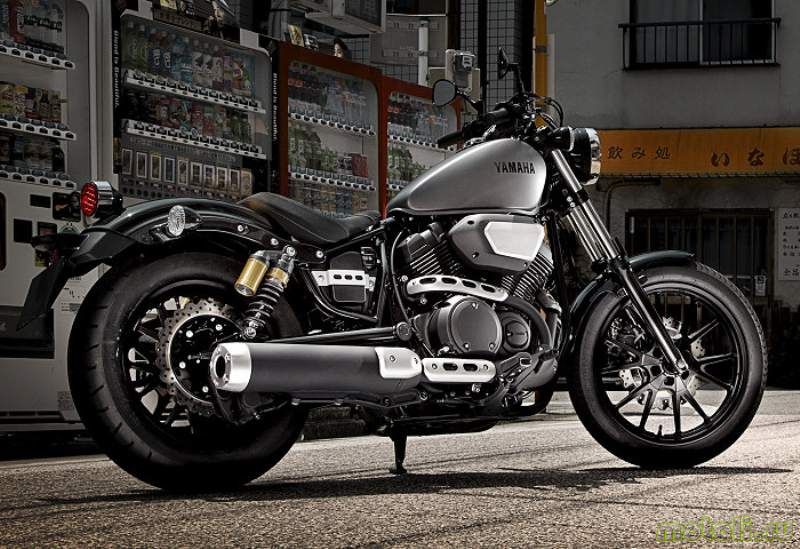

 Based on the experience of producing the Mk 1 main battle tank under license from Vickers Defense Systems (in India, these tanks are called Vijayanta), in the early 1950s, it was decided to start work on the development of a new Indian 0BT, later called the Arjun tank. In order to eliminate dependence on foreign countries in the development and production of armored vehicles, and put the country on a par with the superpowers in terms of tank quality, the Government of India has authorized a project to develop a tank since 1974. One of the first prototypes of the Arjun tank was made public in April 1985. The weight of the combat vehicle is about 50 tons, and it was planned that the tank would cost about US$1,6 million. However, the cost of the tank has increased slightly since the 80s, and the development process of the tank faced delays. As a result, the final product began to visually resemble the German Leopard 2 tank, however, unlike the German tank, its future remains in doubt. Despite the production of its own tank, India plans to massively purchase Russian T-90 tanks, although there is already an order for the production of 124 Arjun tanks at Indian defense facilities.
Based on the experience of producing the Mk 1 main battle tank under license from Vickers Defense Systems (in India, these tanks are called Vijayanta), in the early 1950s, it was decided to start work on the development of a new Indian 0BT, later called the Arjun tank. In order to eliminate dependence on foreign countries in the development and production of armored vehicles, and put the country on a par with the superpowers in terms of tank quality, the Government of India has authorized a project to develop a tank since 1974. One of the first prototypes of the Arjun tank was made public in April 1985. The weight of the combat vehicle is about 50 tons, and it was planned that the tank would cost about US$1,6 million. However, the cost of the tank has increased slightly since the 80s, and the development process of the tank faced delays. As a result, the final product began to visually resemble the German Leopard 2 tank, however, unlike the German tank, its future remains in doubt. Despite the production of its own tank, India plans to massively purchase Russian T-90 tanks, although there is already an order for the production of 124 Arjun tanks at Indian defense facilities.

